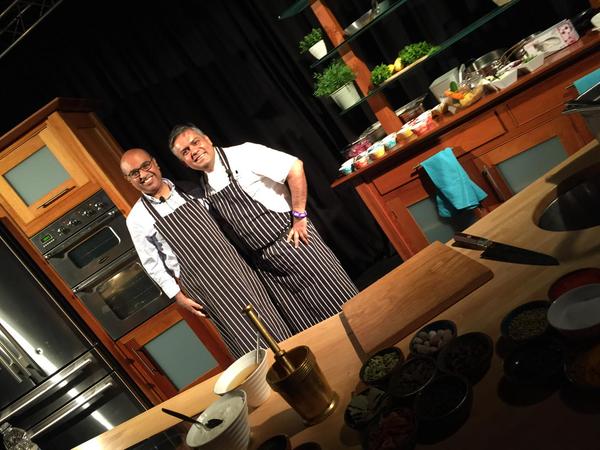How can we feed the rapidly increasing population?
Where will our food come from in 20 years’ time? What about 50 years from now? Or 100? It’s an important question, and the answer is far from simple.
By Josie Gurney-Read, November 2015
 The United Nations has predicted that by 2050, the current world population of 7.2 billion will have swelled to some 9.1 billion. Closer to home, the Office for National Statistics has suggested that the population of Britain will rise by 4.4 million to 69 million over the next decade.
The United Nations has predicted that by 2050, the current world population of 7.2 billion will have swelled to some 9.1 billion. Closer to home, the Office for National Statistics has suggested that the population of Britain will rise by 4.4 million to 69 million over the next decade.
Feeding all those extra mouths is a challenge that world leaders, industry experts and academics alike have recognised as a high priority, with estimates suggesting that world food production will have to increase by 70 per cent to cope with the numbers.
Speaking to the Telegraph, Warwick's vice chancellor Sir Nigel Thrift said it was an important area of research for the institution.
“We have a global research priority programme,” he said. “Whether it’s food, or sustainable cities, or energy, or innovative manufacturing; one of the things we are trying to do is link people up with those priorities, because our ability to be able to feed nine billion people, is an important matter.”
As part of its GRP programme, the university is looking at a wide range of options for dealing with world food supplies, from helping with research into ensuring the future of pollinator bees, to looking at ways to tackle disease in vegetable crops in order to eliminate waste, and enabling urban populations to eat well but sustainably.
Changing Perceptions
Vivek Singh, TV chef and owner of The Cinnamon Club in London, has similar priorities. According to the leading Indian restaurateur, it is essential that everyone starts thinking about how they can adapt their food habits to live more sustainably, and that goes for chefs as well.
“My own approach towards food has changed so much in the last 20 years,” he says. “When I started out I used to just buy the finest produce, the finest cut of meat that I could afford to buy, and I’d put it on the menu for a price that people were willing to pay.
“But it’s not right to go only for a certain kind of ingredient, or a certain cut of meat. We should adopt a more holistic approach. We need to ask if everything is being used.
“A one-tonne cow only produces about four kilos of fillet,” he adds, “if everyone just wanted to use the fillet, then what would we do with the rest?”
Beyond the population boom, it is the farming of red meat, in particular, that is of concern to environmentalists. Farmers may soon struggle to meet Western demand.
Indeed, the Food and Agriculture Organisation has revealed that, in Britain, we consume more than double the world’s meat average. This equates to more than 80kg per person per year compared to just 5kg in India and 21kg in Morocco.
Rising demand could lead to increased deforestation and methane emissions, which could cause an 80 per cent rise in greenhouse gas emissions by 2050. Mr Singh argues that alternatives can play a small role in the solution.
 Evolving as vegetarians
Evolving as vegetarians
“Thirty-three per cent of my dishes are vegetarian,” he says. “In terms of what people consume, it’s a good representation. But, compared to a country like India, where 65 per cent of the population is vegetarian, I think we could add more vegetarian dishes into our diets.
“Meat is several times more intensive to farm, and with the population that we are looking at in 20 years’ time, I think we will need to adapt on every level.”
Speaking after his workshop on simple Indian cookery at the Festival of the Imagination, Mr Singh says that it’s up to chefs to introduce different ingredients onto their menus.
“If people like the saddle of lamb and if I continue to put a saddle of lamb in front of them, then they will never try anything else,” he says. “But if every time I sell saddle, I put a piece of the shank or a piece of the tail or a piece of the neck [on the side] it opens people’s minds to trying something new.”
Singh says that often the reason that people are reluctant to try new foods is simply down to an inability to recognise their potential.
“There’s a section of society that is more concerned about where their food is coming from. But just as this group of people has grown, there are still more who remain uninformed of what goes into their food. Some of it is linked to affordability and price. And that is very difficult to combat.”
However, he adds that subtle and small changes in people’s lives can make a real difference.
“Move from having a supermarket meal four times a week to two times a week,” he suggests, and make sure the other two times the meals are “cooked from scratch”.
“The power that you regain by starting to use things in raw form can be extremely liberating and very therapeutic, but only if you are able to make the shift from convenience store.”
Image: Restaurant Rambla, Copenhagen (Ørestaden) by Kristoffer Trolle (via Flickr)
